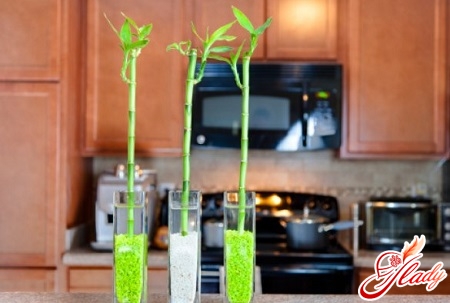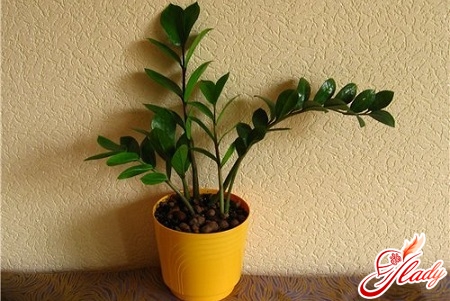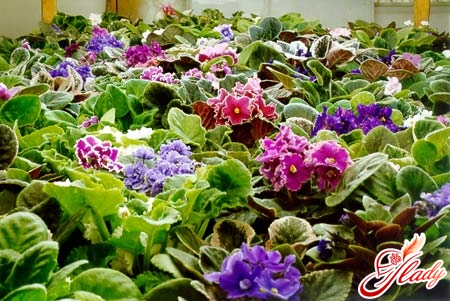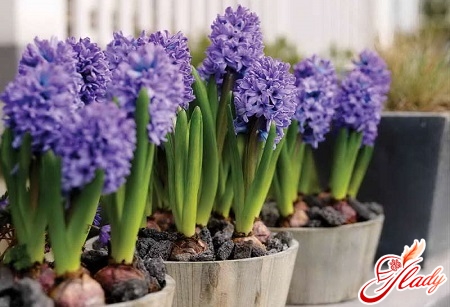 Hyacinth is a young and handsome youth, the son ofThe king of Sparta was not inferior to the gods of Olympus in beauty or intelligence. He was the best friend of Apollo himself. One day, the friends competed in discus throwing and the mighty Apollo, miscalculating his strength, mortally wounded Hyacinth. When the young man died and his soul went to the kingdom of Hades, Apollo, full of remorse, decided to perpetuate the memory of his friend and turned his blood into a beautiful scarlet flower. This beautiful and sad legend was the first to tell the world about the appearance of a wonderful Mediterranean flower. For a long time, hyacinth was a symbol of sadness and grief, it was even given the name - the rain flower. Today, the Greeks consider it their amulet, which protects them from damage and the evil eye. These flowers appeared in Europe in the 16th century - they were brought by merchant travelers. Very soon, hyacinths gained popularity. Year after year, new species were bred, suitable for home growing and differing in color and bud size. But the most interesting property of this plant was discovered by Charles Darwin. He combined the halves of bulbs of different species and got two different in color, but equal in beauty flowers in one bush. There are about 2000 species of this plant. All of them are beautiful in their own way, many are suitable for growing at home. The color range of buds varies from white and pale yellow to red, purple and even black flowers. Today, hyacinth is considered a flower of love and fidelity, and its color can tell about the feelings of the person who presented the flower. For example, white symbolizes constancy and fidelity, yellow - jealousy, blue - self-confidence. It is not surprising that many amateur gardeners want to grow this plant at home. After all, many of its species bloom in winter, when there is a blizzard outside and there is not enough sunlight. However, not everyone succeeds in achieving such unseasonable flowering. And today we will tell you about the secrets of growing hyacinth at home, about the correct forcing (stimulation for flowering), and also about what care these flowers require in indoor conditions.
Hyacinth is a young and handsome youth, the son ofThe king of Sparta was not inferior to the gods of Olympus in beauty or intelligence. He was the best friend of Apollo himself. One day, the friends competed in discus throwing and the mighty Apollo, miscalculating his strength, mortally wounded Hyacinth. When the young man died and his soul went to the kingdom of Hades, Apollo, full of remorse, decided to perpetuate the memory of his friend and turned his blood into a beautiful scarlet flower. This beautiful and sad legend was the first to tell the world about the appearance of a wonderful Mediterranean flower. For a long time, hyacinth was a symbol of sadness and grief, it was even given the name - the rain flower. Today, the Greeks consider it their amulet, which protects them from damage and the evil eye. These flowers appeared in Europe in the 16th century - they were brought by merchant travelers. Very soon, hyacinths gained popularity. Year after year, new species were bred, suitable for home growing and differing in color and bud size. But the most interesting property of this plant was discovered by Charles Darwin. He combined the halves of bulbs of different species and got two different in color, but equal in beauty flowers in one bush. There are about 2000 species of this plant. All of them are beautiful in their own way, many are suitable for growing at home. The color range of buds varies from white and pale yellow to red, purple and even black flowers. Today, hyacinth is considered a flower of love and fidelity, and its color can tell about the feelings of the person who presented the flower. For example, white symbolizes constancy and fidelity, yellow - jealousy, blue - self-confidence. It is not surprising that many amateur gardeners want to grow this plant at home. After all, many of its species bloom in winter, when there is a blizzard outside and there is not enough sunlight. However, not everyone succeeds in achieving such unseasonable flowering. And today we will tell you about the secrets of growing hyacinth at home, about the correct forcing (stimulation for flowering), and also about what care these flowers require in indoor conditions.
The distillation of hyacinths
Hyacinth is a bulbous annual plant.plants that feel great in the garden and begin to bloom in early spring. You can also grow this flower at home, the main thing is to follow some rules. You should start with a careful examination of the bulb. You need to choose it by size. It is best to give preference to a bulb with a diameter of at least 5 centimeters. Since the larger the bulb, the easier it will be to grow a full-fledged plant from it. Also pay attention to its external condition: it should be dense, without rotting areas and mechanical damage. For successful forcing at home, the hyacinth bulb must go through several stages. After you have dug up the flower (usually this is done at the end of June), it must be placed in a warm and humid room where the air temperature reaches 28-30 degrees. The bulb must be stored this way for at least two weeks. Then move it to a cooler place with a temperature of 22-25 degrees. And after a couple of weeks, place it in even cooler conditions - 15-17 degrees. After all these "relocations", the bulb can be planted in a pot. Store-bought bulbs have already undergone all these stages of preparation, so you will only need to save them until planting. If you want flowers to appear by Christmas, plant them in September. Later planting will delay flowering until the end of February-beginning of March.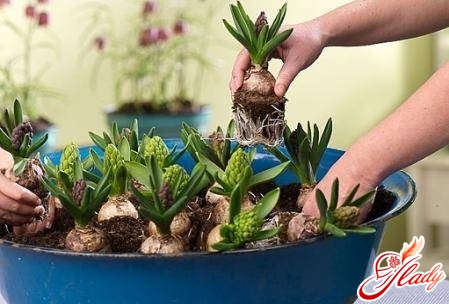
Planting in a pot
The planting container should be wide andshallow, drainage holes are required. You can buy a ready-made mixture, or you can make it yourself. To do this, mix equal parts of turf, leaf and compost soil and add a little sand and peat. Put a layer of expanded clay on the bottom of the pot, then a small layer of soil. Next, sprinkle the soil with fine sand and place the bulbs on it. They should be located closely, but not touching each other and the edge of the container. Now lightly press the bulbs into the ground and sprinkle with the remaining soil so that the tops remain in the air. Now the future hyacinths need to artificially create a dormant period. To do this, place the pot in the darkest and coolest room in your house, for example, in the cellar. Constantly monitor the condition of the soil - it should always be moist. The bulbs "sleep" for 2-2.5 months. After this time, they should be well rooted. Remember, such a period is necessary for successful cultivation of hyacinths at home! If it is not possible to place future flowers in the cellar, you can put them in the refrigerator, where the temperature is not lower than 5-7 degrees Celsius.
Features of care during the growth period
After the bulbs have taken root andthrew out a couple of leaves, you can move the pot into the house. The selected room should be cool and light. It is best if the hyacinths are kept in a room where the air temperature does not exceed 15 degrees for the next month. As soon as flowers appear, the plant is moved to a permanent place of residence, which must be protected from drafts and heating batteries. The most optimal temperature for abundant and long flowering is 20 degrees Celsius. In principle, caring for hyacinth at home comes down to only proper watering. Water procedures should be regular - make sure that the soil is constantly moist. Water carefully, trying not to get on the bulb and in the axils of the leaves. In order for the hyacinth to grow an even and beautiful bush, periodically turn it to the light with different sides. Top dressing is carried out with special fertilizers. Dilute them according to the instructions and add to the soil once every two weeks. In the evening, you can provide the flower with additional illumination using fluorescent lamps. It is worth noting that the conditions described above are considered ideal for growing hyacinth at home. However, this does not mean that if they are slightly violated, it will not bloom. The buds will simply be smaller, the leaves - less often, and the stem will begin to stretch. The only mandatory condition is the cold period, without it, growing hyacinths is impossible.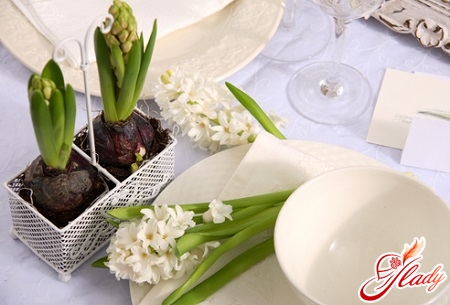
Hyacinths after flowering
So, you have successfully achieved flowering of hyacinth,admired its beauty and enjoyed its aroma. But the time has come, and the hyacinth has faded. What to do next? Here the choice is yours. You can simply throw away the plant, and the following year repeat the forcing and growing procedure. Or you can be patient and try to save the flower. So, how to care for a hyacinth after flowering? In order to get young hyacinths in the future, it is necessary to cut off the faded flower stalks and continue watering and fertilizing the plant. This must be done until the leaves completely wither. During this period, the mother bulb gains strength and can produce daughter bulbs - babies. Remove the plant from the ground, remove the remaining leaves and dry the bulb for a couple of days. Carefully examine it - if the daughter bulbs are well developed and easily separated, detach them. If after the first attempt it was not possible to separate the bulbs, postpone this procedure until next year. Although faded bulbs are not suitable for repeated forcing, they can be successfully transplanted into the garden. Transplantation into open ground occurs in the fall, and the following year you will have a fragrant flowerbed in the yard of the house or in the country. Garden cultivation of hyacinths is a separate topic. I would just like to say - in order to obtain bulbs suitable for indoor cultivation by summer, the plant is not allowed to bloom fully. The buds are torn off so that the bulb gains strength. In the fall, it is dug up, dried and the forcing procedure described above is repeated.
What difficulties await the florist?
Hyacinth is not a capricious flower, but there are still some difficulties in its cultivation. Let's consider them in more detail.
- Selection of bulbs
The most important part.As mentioned above, the bulbs for planting should be healthy and large. If the bulb is too small, you may not see flowering. The plant will only produce leaves. Bulbs planted in one container should be the same size, otherwise they will bloom out of sync. Be sure to inspect the bulb for rot and other damage. And before planting, treat it with a disinfectant solution.
- The rest period
"Sleep" of hyacinths must take placestrictly according to the rules. If you violate it and take the plant out "into the light" ahead of time, it will develop poorly and may not bloom at all. The same will happen if you keep the pot in the dark for too long - only the leaves will grow well, and the release of buds will slow down.
- Watering and lighting
These factors have a significant impact on developmentflower. If they are insufficient, the plant will dry out, shed its leaves and unblown buds. If it is overwatered or if moisture gets into the leaf axils, rotting may occur. The buds will also fall off, not having time to please you with their beauty. So we have considered what growing hyacinths at home is. As you have noticed, this process is not particularly difficult. The main thing here is desire. And, of course, a little patience. We hope that our article will help you go through all the stages of growing home hyacinths, and by the New Year you will please yourself and your loved ones with fragrant flowers.





